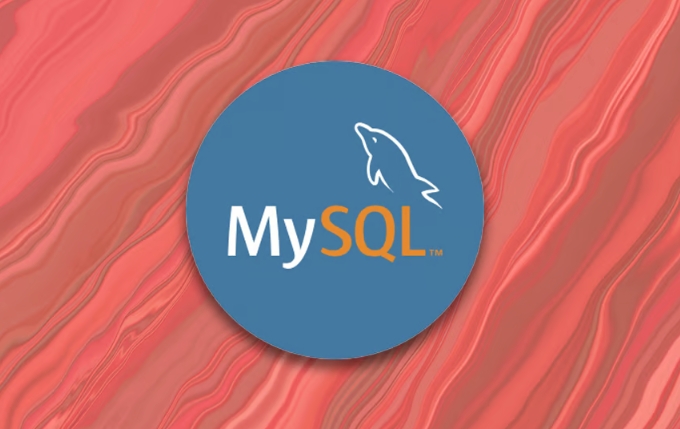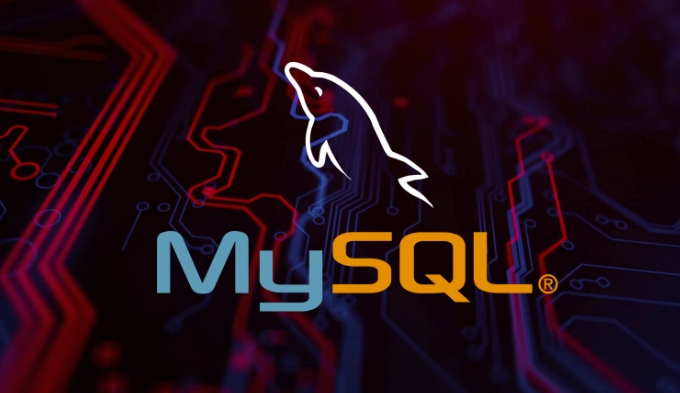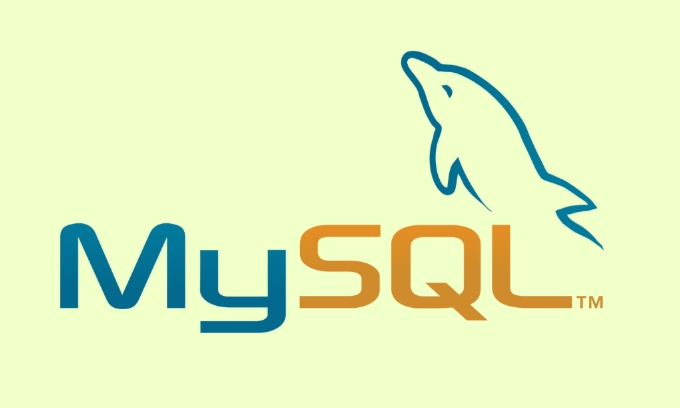Establishing secure remote connections to a MySQL server
Jul 04, 2025 am 01:44 AMTo securely connect to a remote MySQL server, use SSH tunneling, configure MySQL for remote access, set firewall rules, and consider SSL encryption. First, establish an SSH tunnel with ssh -L 3307:localhost:3306 user@remote-server -N and connect via mysql -h 127.0.0.1 -P 3307. Second, edit MySQL’s config file to change bind-address to the server’s public IP or 0.0.0.0, then restart MySQL. Third, grant remote access using GRANT ALL PRIVILEGES ON database.* TO 'user'@'your-local-ip', and restrict access via firewall tools like UFW with sudo ufw allow from your-local-ip to any port 3306. Fourth, if not using SSH, enable SSL in MySQL by configuring valid certificates and enforcing SSL for remote users.

Connecting to a MySQL server securely from a remote location is a common need, especially when managing databases for web apps or cloud services. The key isn't just about making the connection work — it's making sure it works safely without exposing your data or system to unnecessary risks.

Here are some practical steps and considerations to help you set up secure remote access to a MySQL server.

Use SSH Tunneling for Secure Access
One of the most reliable ways to connect remotely to MySQL is through an SSH tunnel. This method encrypts all communication between your local machine and the MySQL server, even if the database protocol itself isn’t encrypted.
To set this up:

- Make sure SSH access is enabled on the server where MySQL is running.
- Forward a local port through SSH to the MySQL server’s port (usually 3306).
- Configure your MySQL client to connect to
127.0.0.1on the forwarded port.
For example, this command forwards port 3306 on the remote server to port 3307 locally:
ssh -L 3307:localhost:3306 user@remote-server -N
Then, connect using:
mysql -h 127.0.0.1 -P 3307 -u your_user -p
This way, the actual database credentials and queries travel through an encrypted tunnel, reducing the risk of interception.
Configure MySQL to Allow Remote Connections
By default, MySQL binds only to localhost. To allow remote access, you'll need to adjust the configuration.
- Open the MySQL config file (
/etc/mysql/my.cnfor/etc/my.cnf) and look for thebind-addressline. - Change it from
127.0.0.1to the server's public IP or0.0.0.0(which allows connections from any IP). - Restart MySQL after saving changes.
Also, make sure that:
- The user account you're connecting with has privileges for remote hosts — not just
localhost. - You're not allowing overly broad access like
'user'@'%'unless absolutely necessary.
You can grant access specifically to the IP address you're connecting from:
GRANT ALL PRIVILEGES ON database.* TO 'user'@'your-local-ip' IDENTIFIED BY 'password'; FLUSH PRIVILEGES;
This adds a layer of control by limiting which IPs can connect.
Secure the Server with Firewall Rules
Even if you’ve configured MySQL properly, leaving port 3306 open to the public internet is risky. Firewalls help limit who can reach that port in the first place.
On the server side:
- Use tools like
ufworiptablesto restrict access to MySQL's port. - Only allow traffic from specific IPs or ranges.
For example, using UFW:
sudo ufw allow from your-local-ip to any port 3306
If you're not using direct remote access and prefer SSH tunneling instead, just block port 3306 entirely — it doesn’t need to be open at all in that case.
Also, avoid having MySQL listen on a public interface unless you have strong reasons and proper protections in place.
Consider SSL for Direct Remote Connections
If you're connecting directly over the network (not using SSH), enabling SSL for MySQL connections is a must.
- Generate or obtain valid SSL certificates for your MySQL server.
- Configure MySQL to require SSL for remote users.
- Test the connection using a client that supports SSL.
This ensures that even if someone intercepts the traffic, they won’t be able to read the contents easily.
However, setting up SSL correctly can be complex. If you're not familiar with certificate signing and encryption settings, start small and test thoroughly before relying on it in production.
Setting up a secure remote connection to MySQL doesn't have to be complicated, but it does require attention to detail. Whether you go with SSH tunnels, firewall restrictions, or SSL encryption, each step plays a role in keeping your data safe.
And remember — the fewer people who can access your database directly, the better. Keep permissions tight, monitor logs regularly, and always assume someone is trying to get in the back door.
The above is the detailed content of Establishing secure remote connections to a MySQL server. For more information, please follow other related articles on the PHP Chinese website!

Hot AI Tools

Undress AI Tool
Undress images for free

Undresser.AI Undress
AI-powered app for creating realistic nude photos

AI Clothes Remover
Online AI tool for removing clothes from photos.

Clothoff.io
AI clothes remover

Video Face Swap
Swap faces in any video effortlessly with our completely free AI face swap tool!

Hot Article

Hot Tools

Notepad++7.3.1
Easy-to-use and free code editor

SublimeText3 Chinese version
Chinese version, very easy to use

Zend Studio 13.0.1
Powerful PHP integrated development environment

Dreamweaver CS6
Visual web development tools

SublimeText3 Mac version
God-level code editing software (SublimeText3)

Hot Topics
 Strategies for MySQL Query Performance Optimization
Jul 13, 2025 am 01:45 AM
Strategies for MySQL Query Performance Optimization
Jul 13, 2025 am 01:45 AM
MySQL query performance optimization needs to start from the core points, including rational use of indexes, optimization of SQL statements, table structure design and partitioning strategies, and utilization of cache and monitoring tools. 1. Use indexes reasonably: Create indexes on commonly used query fields, avoid full table scanning, pay attention to the combined index order, do not add indexes in low selective fields, and avoid redundant indexes. 2. Optimize SQL queries: Avoid SELECT*, do not use functions in WHERE, reduce subquery nesting, and optimize paging query methods. 3. Table structure design and partitioning: select paradigm or anti-paradigm according to read and write scenarios, select appropriate field types, clean data regularly, and consider horizontal tables to divide tables or partition by time. 4. Utilize cache and monitoring: Use Redis cache to reduce database pressure and enable slow query
 Choosing appropriate data types for columns in MySQL tables
Jul 15, 2025 am 02:25 AM
Choosing appropriate data types for columns in MySQL tables
Jul 15, 2025 am 02:25 AM
WhensettingupMySQLtables,choosingtherightdatatypesiscrucialforefficiencyandscalability.1)Understandthedataeachcolumnwillstore—numbers,text,dates,orflags—andchooseaccordingly.2)UseCHARforfixed-lengthdatalikecountrycodesandVARCHARforvariable-lengthdata
 How to use PHP to develop a Q&A community platform Detailed explanation of PHP interactive community monetization model
Jul 23, 2025 pm 07:21 PM
How to use PHP to develop a Q&A community platform Detailed explanation of PHP interactive community monetization model
Jul 23, 2025 pm 07:21 PM
1. The first choice for the Laravel MySQL Vue/React combination in the PHP development question and answer community is the first choice for Laravel MySQL Vue/React combination, due to its maturity in the ecosystem and high development efficiency; 2. High performance requires dependence on cache (Redis), database optimization, CDN and asynchronous queues; 3. Security must be done with input filtering, CSRF protection, HTTPS, password encryption and permission control; 4. Money optional advertising, member subscription, rewards, commissions, knowledge payment and other models, the core is to match community tone and user needs.
 mysql common table expression (cte) example
Jul 14, 2025 am 02:28 AM
mysql common table expression (cte) example
Jul 14, 2025 am 02:28 AM
CTE is a temporary result set in MySQL used to simplify complex queries. It can be referenced multiple times in the current query, improving code readability and maintenance. For example, when looking for the latest orders for each user in the orders table, you can first obtain the latest order date for each user through the CTE, and then associate it with the original table to obtain the complete record. Compared with subqueries, the CTE structure is clearer and the logic is easier to debug. Usage tips include explicit alias, concatenating multiple CTEs, and processing tree data with recursive CTEs. Mastering CTE can make SQL more elegant and efficient.
 mysql temporary table vs memory table
Jul 13, 2025 am 02:23 AM
mysql temporary table vs memory table
Jul 13, 2025 am 02:23 AM
Temporary tables are tables with limited scope, and memory tables are tables with different storage methods. Temporary tables are visible in the current session and are automatically deleted after the connection is disconnected. Various storage engines can be used, which are suitable for saving intermediate results and avoiding repeated calculations; 1. Temporary tables support indexing, and multiple sessions can create tables with the same name without affecting each other; 2. The memory table uses the MEMORY engine, and the data is stored in memory, and the restart is lost, which is suitable for cache small data sets with high frequency access; 3. The memory table supports hash indexing, and does not support BLOB and TEXT types, so you need to pay attention to memory usage; 4. The life cycle of the temporary table is limited to the current session, and the memory table is shared by all connections. When choosing, it should be decided based on whether the data is private, whether high-speed access is required and whether it can tolerate loss.
 Setting up semi-synchronous replication in MySQL
Jul 15, 2025 am 02:35 AM
Setting up semi-synchronous replication in MySQL
Jul 15, 2025 am 02:35 AM
The steps for setting MySQL semi-synchronous replication are as follows: 1. Confirm the version supports and load the plug-in; 2. Turn on and enable semi-synchronous mode; 3. Check the status and operation status; 4. Pay attention to timeout settings, multi-slave library configuration and master-slave switching processing. It is necessary to ensure that MySQL 5.5 and above versions are installed, rpl_semi_sync_master and rpl_semi_sync_slave plugins, enable corresponding parameters in the master and slave library, and configure automatic loading in my.cnf, restart the service after the settings are completed, check the status through SHOWSTATUS, reasonably adjust the timeout time and monitor the plug-in operation.
 Automating MySQL Deployments with Infrastructure as Code
Jul 20, 2025 am 01:49 AM
Automating MySQL Deployments with Infrastructure as Code
Jul 20, 2025 am 01:49 AM
To achieve MySQL deployment automation, the key is to use Terraform to define resources, Ansible management configuration, Git for version control, and strengthen security and permission management. 1. Use Terraform to define MySQL instances, such as the version, type, access control and other resource attributes of AWSRDS; 2. Use AnsiblePlaybook to realize detailed configurations such as database user creation, permission settings, etc.; 3. All configuration files are included in Git management, support change tracking and collaborative development; 4. Avoid hard-coded sensitive information, use Vault or AnsibleVault to manage passwords, and set access control and minimum permission principles.
 mysql incorrect string value for column
Jul 15, 2025 am 02:40 AM
mysql incorrect string value for column
Jul 15, 2025 am 02:40 AM
MySQL error "incorrectstringvalueforcolumn" is usually because the field character set does not support four-byte characters such as emoji. 1. Cause of error: MySQL's utf8 character set only supports three-byte characters and cannot store four-byte emoji; 2. Solution: Change the database, table, fields and connections to utf8mb4 character set; 3. Also check whether the configuration files, temporary tables, application layer encoding and client drivers all support utf8mb4; 4. Alternative solution: If you do not need to support four-byte characters, you can filter special characters such as emoji at the application layer.






